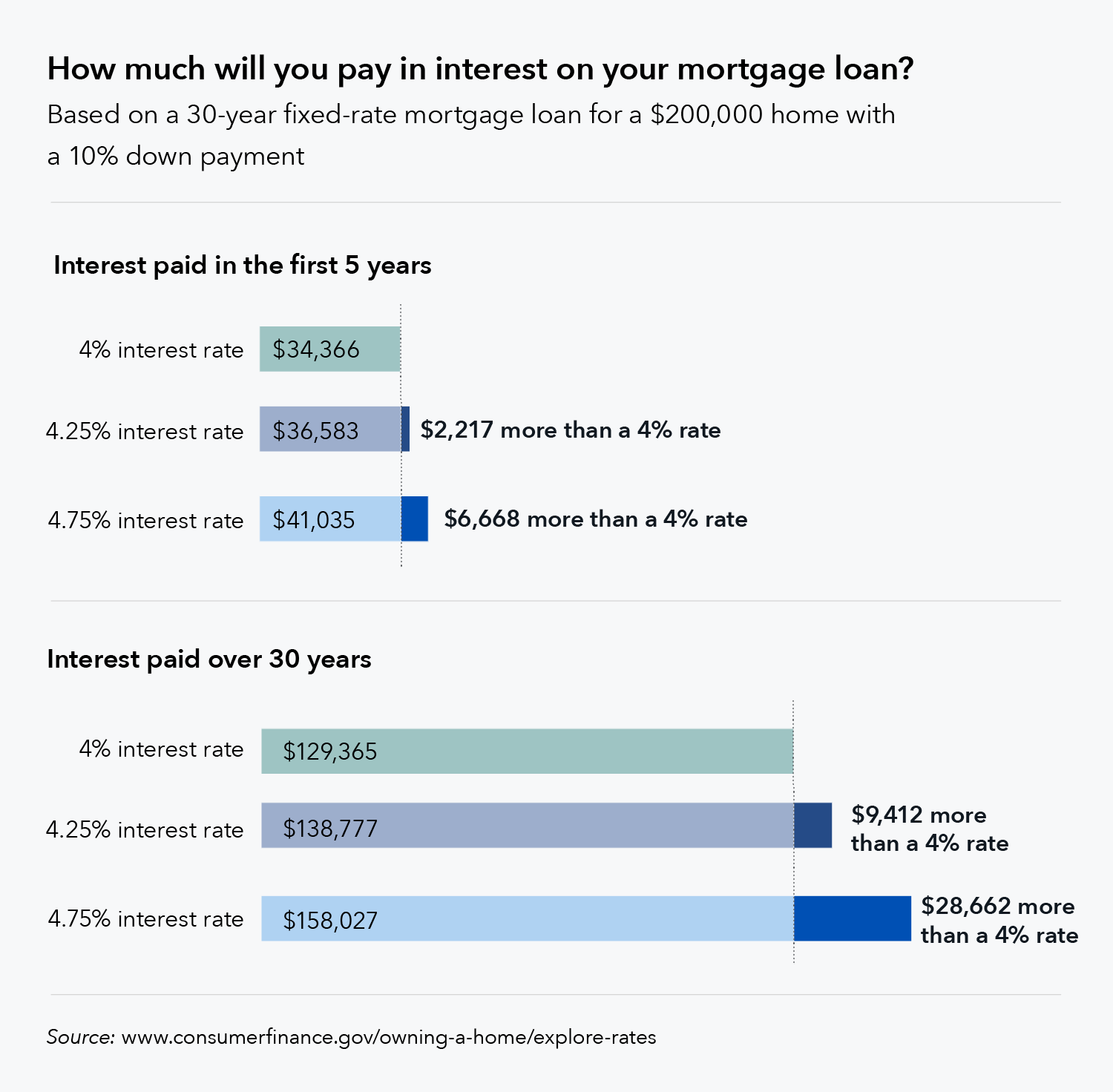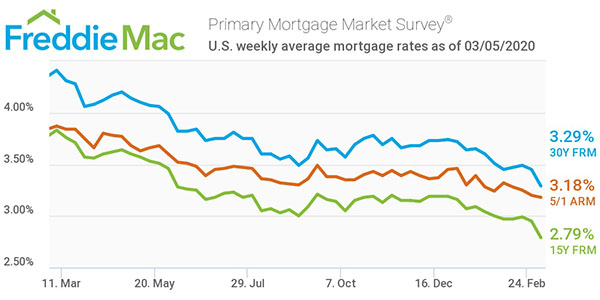You can't obtain 100% of what your home deserves, or anywhere near to it, nevertheless - what the interest rate on mortgages today. Part of your house equity need to be used to pay the loan's expenses, including home loan premiums and interest. Here are a few other things you require to understand about how much you can borrow: The loan earnings are based on the age of the youngest borrower or, if the debtor is wed, the younger spouse, even if the younger partner is not a borrower.
The lower the mortgage rate, the more you can borrow. The greater your property's appraised value, the more you can borrow. A strong reverse home mortgage monetary assessment increases the proceeds you'll get since the lending institution will not withhold part of them to pay real estate tax and property owners insurance coverage in your place.
In January 2018, the http://lanelrdj509.iamarrows.com/the-who-provides-most-mortgages-in-42211-ideas average initial principal limit was $211,468 and the typical maximum claim quantity was $412,038. The average debtor's initial principal limit is about 58% of the optimum claim quantity. The government lowered the preliminary principal limitation in October 2017, making it harder for house owners, specifically younger ones, to receive a reverse home mortgage.
The government decreased the limitation for the same factor it altered insurance coverage premiums: due to the fact that the mortgage insurance fund's deficit had actually almost doubled over the previous fiscal year. This is the fund that pays lending institutions and secures taxpayers from reverse home mortgage losses. To further complicate things, you can't borrow all of your initial primary limitations in the very first year when you select a lump amount or a line of credit.
And if you choose a lump sum, the amount you get up front is all you will ever get. If you choose the line of credit, your credit line will grow gradually, however just if you have unused funds in your line. Both partners have to consent to the loan, however both do not need to be borrowers, and this arrangement can create problems (what are the different types of mortgages).
A reverse home mortgage should be paid back when the customer dies, and it's generally paid back by offering your home. If the enduring partner wishes to keep the house, she or he will need to repay the loan through other ways, possibly through a costly refinance. Just one partner might be a debtor if just one spouse holds title to your house, possibly since it was acquired or since its ownership precedes the marital relationship.
See This Report on What Banks Do 100 Percent Mortgages
The nonborrowing partner could even lose the home if the loaning spouse needed to move into a nursing home or assisted living home for a year or longer. With an item as potentially profitable as a reverse home mortgage and a susceptible population of debtors who may have cognitive impairments or be desperately seeking financial redemption, rip-offs are plentiful.

The supplier or professional might or may not in fact provide on promised, quality work; they might simply take the property owner's money. Loved ones, caretakers, and monetary consultants have actually likewise benefited from seniors by utilizing a power of lawyer to reverse home loan the home, then taking the proceeds, or by persuading them to buy a monetary product, such as an annuity or whole life insurance, that the senior can only manage by obtaining a reverse home mortgage.
These are just a few of the reverse home loan scams that can journey up unwitting property owners. Another risk associated with a reverse home loan is the possibility of foreclosure. Despite the fact that the customer isn't accountable for making any home loan paymentsand therefore can't end up being overdue on thema reverse mortgage needs the debtor to fulfill certain conditions.
As a reverse home mortgage debtor, you are needed to live in the house and maintain it. If the home falls into disrepair, it will not deserve fair market price when it's time to offer, and the loan provider won't be able to recover the full amount it has extended to the customer.
Again, the lending institution imposes these requirements to secure its interest in the home. If you don't pay your home taxes, your regional tax authority can seize your home. If you do not have house owners insurance coverage and there's a house fire, the lender's security is damaged. About one in five reverse home mortgage foreclosures from 2009 through 2017 were brought on by the customer's failure to pay real estate tax or insurance coverage, according to an analysis by Reverse Home mortgage Insight.
Preferably, anybody thinking about securing a reverse home loan will take the time to completely find out about how these loans work. That way, no deceitful lending institution or predatory fraudster can prey on them, they'll have the ability to make a sound choice even if they get a poor-quality reverse mortgage counselor and the loan won't include any unpleasant surprises. what are the different types of home mortgages.

How Do Escrow Accounts Work For Mortgages Things To Know Before You Buy
Borrowers should put in the time to inform themselves about it to be sure they're making the very best option about how to utilize their home equity.
Much like a conventional home loan, there are expenses related to getting a reverse home mortgage, specifically the Home Equity Conversion Home Loan (HECM). These expenses are generally greater than those connected with a traditional home loan. Here are a few fees you can anticipate. The upfront mortgage insurance premium (MIP) is paid to the FHA when you close your loan.
If the home offers for less than what is due on the loan, this insurance coverage covers the distinction so you won't wind up underwater on your loan and the loan provider does not lose money on their investment. It also safeguards you from losing your loan if your lender fails or can no longer fulfill its responsibilities for whatever factor.
The expense of the in advance MIP is 2% of the assessed worth of the home or $726,535 (the FHA's financing limit), whichever is less. For instance, if you own a house that's worth $250,000, your upfront MIP will cost around $5,000. Along with an upfront MIP, there is also an annual MIP that accumulates annually and is paid when the loan comes due.
5% of the loan balance. The home loan origination cost is the quantity of cash a loan provider charges to come from and process your loan. This expense is 2% of the first $200,000 of the house's value plus 1% of the remaining value after that. The FHA has actually set a minimum and maximum cost of the origination charge, so no matter what your home is valued, you will not pay less than $2,500 or more than $6,000.
The servicing cost is a regular monthly charge by the lender to service and administer the loan and can cost up to $35 each month. Appraisals are needed by HUD and determine the marketplace worth of your home. While the true cost of your appraisal will depend on elements like location and size of the home, they normally cost in between $300 and $500.
The 8-Minute Rule for What Is Home Equity Conversion Mortgages
These expenses may include: Credit report costs: $30 $50 Document preparation costs: $50 $100 Carrier charges: $50 Escrow, or closing fee: $150 $800 Title insurance: Depend upon your loan and area There are numerous aspects that affect the rate of interest for a reverse mortgage, consisting of the loan provider you work with, the kind of loan you get and whether you get a fixed- or adjustable rate home loan.